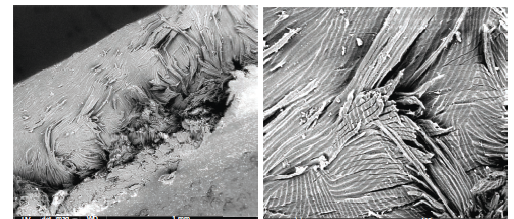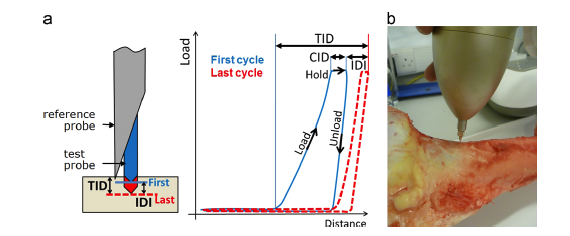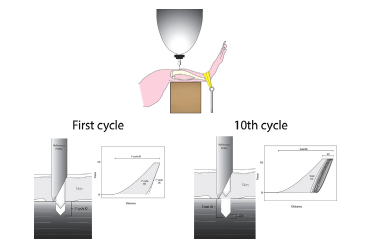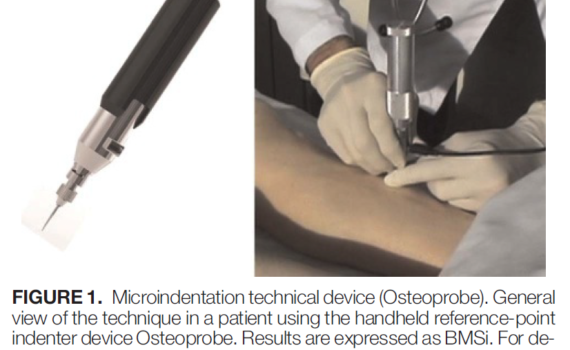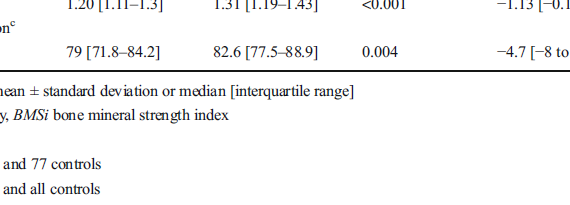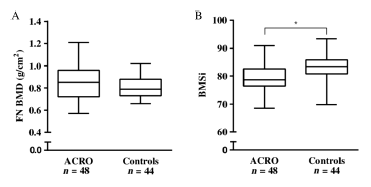Abstract Two hard botanical structures have been characterised in terms of mechanics and structure: the pseudofruit of Coix lacryma-jobi, a native plant of Southeast Asia, and the kernel of the drupe fruit of Thevetia peruviana, a native plant of tropical America. Two indentation techniques at different scales (micro and nano) were employed. […]
MICROINDENTATION
Abstract Loading increases bone mass and strength in a site-specific manner; however, possible effects of loading on bone matrix composition have not been evaluated. Site-specific structural and material properties of mouse bone were analyzed on the macro- and micro/molecular scale in the presence and absence of axial loading. The response […]
Abstract Osteogenesis imperfecta entrains changes at every level in bone tissue, from the disorganization of the collagen molecules and mineral platelets within and between collagen fibrils to the macroarchitecture of the whole skeleton. Investigations using an array of sophisticated instruments at multiple scale levels have now determined many aspects of […]
Abstract Dual-energy X-ray absorptiometry (DXA) is generally a very useful tool for assessing bone mineral density (BMD) and fracture risk. However, observational studies have shown that in certain instances, BMD as measured by DXA systematically over- or underestimates fracture risk. We herein describe the clinical conundrums encountered when assessing fracture […]
Abstract Reference Point Indentation (RPI) is a novel microindentation tool that has emerging clinical potential for the assessment of fracture risk as well as use as a laboratory tool for straight-forward mechanical characterisation of bone. Despite increasing use of the tool, little research is available to advise the set-up of […]
Abstract Reference Point Indentation (RPI) has been proposed as a new clinical tool to aid the diagnosis of Osteoporosis. This study has examined the performance of the tool within entire femurs to improve the understanding of the mechanical properties of bone and also to guide future RPI testing to optimize […]
Abstract Reference point indentation (RPI) has emerged as a novel tool to measure material-level biomechanical properties in vivo. Human studies have been able to differentiate fracture versus non-fracture patients while a dog study has shown the technique can differentiate drug treatment effects. The goal of this study was to extend this […]
Abstract BACKGROUND: Bone mineral density (BMD) measured by dual-energy x-ray absorptiometry is used to assess bone health in kidney transplant recipients (KTR). Trabecular bone score and in vivo microindentation are novel techniques that directly measure trabecular microarchitecture and mechanical properties of bone at a tissue level and independently predict fracture […]
Abstract Bone health is assessed by bone mineral density (BMD). Other techniques such as trabecular bone score and microindentation could improve the risk of fracture’s estimation. Our chronic kidney disease (CKD) patients presented worse bone health (density, microarchitecture, mechanical properties) than controls. More than BMD should be done to evaluate […]
Abstract OBJECTIVE: Acromegaly is a rare disease caused by excess growth hormone (GH) production by the pituitary adenoma. The skeletal complications of GH and IGF-1 excess include increased bone turnover, increased cortical bone mass and deteriorated microarchitecture of trabecular bone, associated with a high risk of vertebral fractures in the […]

